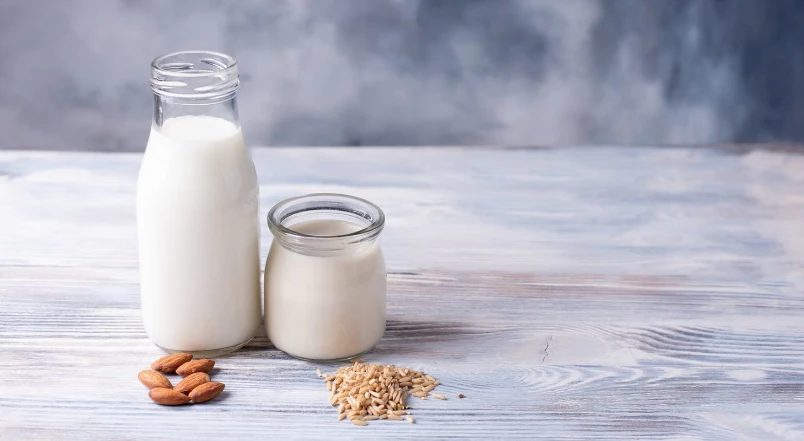Introduction
As condiments, onion and garlic give a rich and fragrant flavor (even if not appreciated by all) to food in many cuisines, from East to West. In reality they are much more than tasty: their consumption, in fact, has been associated with numerous health benefits , including the lowering of cholesterol, blood pressure and the risk of the onset of some forms of cancer.
Garlic, compared to onions, has been the subject of more scientific studies which have shown how, for example, eating garlic for over eight weeks has significantly reduced total cholesterol both in healthy patients and in patients with high cholesterol. Not only that, lowering of fasting blood sugar levels in people with diabetes and systolic and diastolic blood pressure in hypertensive subjects would also have been highlighted . Finally, garlic reduces inflammation in the body.
Onion and garlic have many beneficial similarities, such as containing flavonoids and polyphenols, which are plant compounds with antioxidant properties that could help ward off degenerative diseases. Some scientific studies have shown how flavonoids extracted from onions seemed to inhibit colorectal cancer and decrease hyperlipidemia, a condition in which there are high levels of fat particles in the blood.
Garlic: nutritional properties
The main compound contained in garlic is allicin : this is released when the enzyme allinase acts on alliin, and is a fairly powerful natural antibiotic , capable of inhibiting numerous types of bacteria . In addition to allicin, garlic contains other antibacterial substances such as garlicin; it is rich in mineral and oligomineral substances , such as magnesium , calcium, phosphorus , iodine and iron ; there are traces of zinc , manganese , selenium , vitamin C (only in fresh garlic), provitamin A , vitamins B1-B2- PP ; contains hormone-like substances and enzymes ( lysozyme and peroxidase).
| Chemical composition | value per 100g | RDA (%) |
| Calories | 41 calories | |
| Edible part | 75% | – |
| Waterfall | 80g | – |
| Available carbohydrates | 8.40 g | – |
| Complex carbohydrates | 0 | – |
| Soluble sugars | 8.40 g | – |
| Protein | 0.90 g | – |
| Fats ( Lipids ) | 0.60 g | – |
| Total saturated | – | |
| total monounsaturated | – | |
| Total polyunsaturated | – | |
| Cholesterol | 0 | – |
| Total fiber | 3.10g | – |
| Soluble fiber | – | |
| Insoluble fiber | – | |
| Alcohol (g) | 0 | – |
| Sodium | 3 mg | 0.20% RDA |
| Potassium | 600 mg | 12.77% RDA |
| Iron | 1.50 mg | 18.75% RDA |
| Soccer | 14 mg | 1.40% RDA |
| Phosphorus | 63 mg | 9% RDA |
| Magnesium | N/A | – |
| Zinc | N/A | – |
| Copper | N/A | – |
| Selenium | N/A | – |
| Thiamine ( Vit. B1 ) | 0.14 mg | 11.67% RDA |
| Riboflavin ( Vit. B2 ) | 0.02 mg | 1.54% RDA |
| Niacin (Vit. B3 or PP) | 1.30 mg | 8.13% RDA |
| Vitamin A retinol eq. | 5 µg | 0.56% RDA |
| C vitamin | 5 mg | 5.56% RDA |
| Vitamin E | N/A | – |
| Vitamin B6 | N/A | – |
| Vitamin B12 | N/A | – |
| Manganese | N/A | – |
Benefits of eating Garlic
Consuming garlic is beneficial in many respects. In fact, there are several healthy properties of this plant widely used in cooking, all over the world. Benefits include :
- promotes hair growth
- stimulates cell growth (due to inositol )
- regulates insulin levels by lowering the blood sugar level
- it is an ally in the treatment of metabolic syndrome and diabetes
- strengthens the immune system
- it is a natural bactericide
- regulates blood pressure
- reduces the risk of arterial sclerosis ,
- regulates the level of cholesterol and triglycerides in the blood
- counteracts meteorism and abdominal cramps ,
- protects against dangerous heavy metals.
Onion: nutritional properties
The onion is a product of vegetable origin belonging to the group of vegetables . It contains a lot of water and has a fair amount of fructose , sugar which, in addition to giving it a certain sweetness, gives it a mild energy function. Proteins and lipids are irrelevant ; cholesterol is absent. Even in terms of vitamins and fiber content, it is irrelevant.
| Nutritional values per 100 g | |||
| Power | 40 kcal | ||
| total carbohydrates | 9.34 g | ||
| Starch | – g | ||
| Simple sugars | 4.24 g | ||
| fibers | 1.7g | ||
| Fats | 0.1g | ||
| Saturated | – g | ||
| Monounsaturated | – g | ||
| Polyunsaturated | – g | ||
| Protein | 1.1g | ||
| Waterfall | 89.11g | ||
| Vitamins | |||
| Vitamin A equivalent | – μg | – % | |
| Beta-carotene | – μg | – % | |
| Lutein Zexanthin | – μg | ||
| Vitamin A | – UI | ||
| Thiamine or B1 | 0.046 mg | 4 % | |
| Riboflavin or B2 | 0.027 mg | 2 % | |
| Niacin or PP or B3 | 0.116 mg | 1 % | |
| Pantothenic acid or B5 | 0.123 mg | 2 % | |
| Pyridoxine or B6 | 0.12 mg | 9 % | |
| folate | 19.0 μg | 5 % | |
| Choline | – mg | – % | |
| Ascorbic acid or C | 7.4 mg | 9 % | |
| Vitamin D | – μg | – % | |
| Alpha- tocopherol or E | – mg | – % | |
| Vit. K | – μg | – % | |
| Minerals | |||
| Soccer | 23.0 mg | 2 % | |
| Iron | 0.21 mg | 2 % | |
| Magnesium | 10.0 mg | 3 % | |
| Manganese | 0.129 mg | 6 % | |
| Phosphorus | 29.0 mg | 4 % | |
| Potassium | 146.0 mg | 3 % | |
| Sodium | – mg | – % | |
| Zinc | 0.17 mg | 2 % | |
| Fluoride | 1.1 μg | – % | |
Benefits of Eating Onion
The onion contains several phototherapeutic substances with obvious health benefits. Among these, we mention:
- potential anticancer activity , especially with regard to colon , stomach and prostate cancer, action exerted by quercitin ;
- diuretic action
- antihypertensive function (due to the presence of flavonoids , but also of alliin and derivatives),
- vermifuge function , and antibiotic especially in the intestine,
- purifying and anti-gout action (promotes the elimination of nitrogenous waste and uric acid ).




